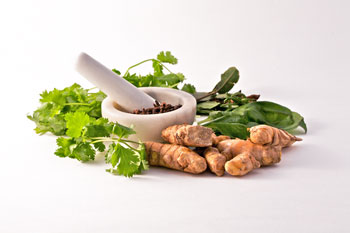 A cognized aspect of Veda, Ayurveda means “science of life and longevity.” It is India’s natural system of medicine, practiced for over 5,000 years. Its goal is to bring balance to the three doshas: vata, pitta, kapha. Another way of saying it is the goal is to prevent and eliminate impurities, and maintain purity throughout the body.
A cognized aspect of Veda, Ayurveda means “science of life and longevity.” It is India’s natural system of medicine, practiced for over 5,000 years. Its goal is to bring balance to the three doshas: vata, pitta, kapha. Another way of saying it is the goal is to prevent and eliminate impurities, and maintain purity throughout the body.
The knowledge of Ayurveda is contained within the very structure of existence. Different facets of Veda correspond to relationships between different levels of existence. Ayurveda involves relativity (the world of duality) viewing and interacting with relativity.
Doshas
In the first instants of manifestation, Consciousness became conscious of itself and duality was born. In that process, the Knower (Consciousness) and the Known (Consciousness aware of itself) are born. Also, a third thing is born: namely, the process of Knowing. These three things are the seed of what is known in Christianity as the Holy Trinity. For more information about this, please see Rishi, Devata, Chhandas page.
Each of those three things has a relationship with the others: The Knower with the Known, the Knower with the process of Knowing, and the Known with the process of Knowing. Those relationships, when unhealthy, give rise to imbalance. Those three imbalances are referred to in Ayurveda as the three doshas: Vata, Pitta, and Kapha. Like everything else in existence, they exist transgradiently (on many levels of existence). The field of Ayurveda explores this domain.
Ayurveda’s Transgradient Nature
Ayurveda can be practiced on different levels. In many instances, the understanding is rather superficial. However, to understand the awesome depth of true Ayurvedic knowledge, one must comprehend the full range of the transgradient nature of life. This comprehension cannot simply be intellectual, but must be embodied. Otherwise, it is not full comprehension.
A person can get a better feeling for Ayurveda by understanding it in the context of Darwinism and Creationism. As species evolved in a direction gravitating towards the Transcendent, organisms branched in diverse directions. Each organism embodied some values of the Transcendent more so than others. For example, the qualities of a rose are quite different from those of a dandelion. As we have said, the process culminates in an organism capable of embodying all those values inherent in the Transcendent and that is what it means to be human. Ayurveda not only understands this conceptually, but has the ability to apply this knowledge.
Herbs
 If a particular value has become dormant in the physiology, an herb can be ingested to enliven that value. Generally when the physiology goes out of balance, more than one value becomes dormant or distorted. It is similar to children learning to play in an orchestra. It is not uncommon for a group of instruments to be playing out of phase with the conductor. Therefore in Ayurveda, a combination of herbs is often used to bring balance to the symphony of the physiology. This art, practiced at its highest level, requires the physician to identify the level and nature of the imbalance, and create a combination of herbs specifically for that. Fortunately, the task is made simpler by there being a finite number of identifiable syndromes. In such instances, by identifying the syndromes afflicting a particular patient, routine therapies can be effectively applied.
If a particular value has become dormant in the physiology, an herb can be ingested to enliven that value. Generally when the physiology goes out of balance, more than one value becomes dormant or distorted. It is similar to children learning to play in an orchestra. It is not uncommon for a group of instruments to be playing out of phase with the conductor. Therefore in Ayurveda, a combination of herbs is often used to bring balance to the symphony of the physiology. This art, practiced at its highest level, requires the physician to identify the level and nature of the imbalance, and create a combination of herbs specifically for that. Fortunately, the task is made simpler by there being a finite number of identifiable syndromes. In such instances, by identifying the syndromes afflicting a particular patient, routine therapies can be effectively applied.
The Experience of Ayurveda
The art of Ayurvedic diagnosis is also transgradient in nature. Everything maps onto (correlates with) everything else. Some mappings are quite abstract, such as the mapping of the dust under your bed onto what is happening on the other side of the moon. Other mappings are more direct and accessible. For example, in reflexology, the foot maps onto the rest of the body—the big toe corresponds to the head, etc. Ayurveda employs the mapping of the appearance of the face onto the body, the pulse onto the body, the sound of the voice onto the body, the psychology onto the body, the spirituality onto the body, etc. The entire transgradient scheme of the individual, complete with its mappings is the realm of Ayurveda. The skill of the practitioner has no limit.
An important practical facet of Ayurveda is called panchakarma, where detoxifying and rejuvenative techniques are used to bring balance to the individual’s health.
Panchakarma begins with an oleation and cleansing technique where ghee (clarified butter) is ingested and toxins are thereby loosened. It continues with various sorts of oil massage, steam baths, and other herbal treatments that move bodily toxins into the gut. Once there, a series of daily bastis (enemas) are administered to purge these toxins from the body. It is all done under the monitoring of an Ayurvedic physician, who determines the specific needs of the individual by way of pulse diagnosis. This provides the experienced practitioner with insights into the person’s bodily constitution and states of health and illness.
The public, particularly in the West, has very little capability of assessing the skill level of an individual Ayurvedic practitioner. The first experience of Ayurveda is generally astounding, regardless of how skilled the practitioner is. Typical comments are: “How could he tell what was going on with my liver, just by feeling my pulse?” “He even knew I had surgery five years ago and a case of the flu last winter!” Beyond that, people tend to evaluate the practitioner based upon his level of charisma and the amount of personal attention and interest portrayed. This is unfortunate, because the best practitioners often become so busy, they can only provide the patient with what is needed, not having time for hand-holding or extra attention. Like everything else in life, when finding an Ayurvedic practitioner, discernment must be cultivated, while judgment must be avoided.
Ayurvedic knowledge of the proper use of different oils and bashmas (incinerated gemstones), aromas, colors, etc. far exceed such knowledge available in the West.

